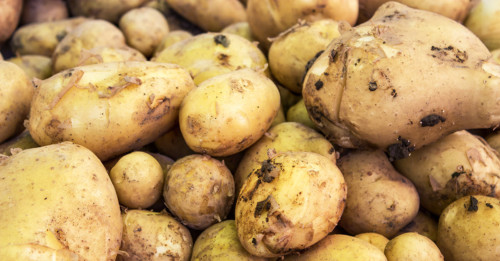It’s easy to imagine a black-and-white photograph of a guy in a ratty cap sitting next to a wash bin full of old shoes. The caption: “Shoe whiskey, hard times.” (Today, you could expect something like #GreatDepressionProblems.) But while alcohol can be made from a ton of stuff in a pinch, shoes are not on that list. Necessary for the production of any kind of alcohol is one common element: sugar.
In the absence of oxygen, Saccharomyces yeast strips oxygen from sugar molecules, leaving behind ethanol, aka potable alcohol, which we then distill to make spirits. For centuries, man has relied on this reaction to ease his pain, steel his confidence, stock his medicine cabinet, and generally endure centuries of plague, warfare, and reality TV.
Along the way, we’ve also figured out that you can get fermentable sugars in a lot of places, meaning you can make liquor from a lot of stuff. From the obvious, and likely earliest, things like grapes (their skin is covered in natural yeasts), we discovered that certain grains could produce fermentable sugars if we just coaxed them a bit (thus, beer). Even vegetables have proven to be a reliable source of fermentable sugars.
By now, the list of things you can make alcohol from is majestically long, which also means the quality and character of the alcohol produced can vary. Let’s take a look at a 10 more (or less) expected liquor sources:
- Barley: after being malted, it has fermentable sugars, usable in beer or as a base for whiskey
- Carrots: the high sugar content makes it a prime candidate for fermentation into carrot wine
- Mare’s milk: any milk (which has high lactose sugar content) can be fermented, but people living in ancient Russia figured out that mare’s milk was higher sugar; Vermont Spirits currently makes a milk-based vodka
- Potatoes: commonly thought as the main base for vodka, it’s actually just a small percentage, while many vodkas are made with grapes, wheat, and other bases
- Corn: at least 51% of any bourbon has to be corn, but the high-sugar native veggie can also be used for moonshines and vodka (like Tito’s)
- Sugarcane juice: the base of rhum agricole, a kind of rum, as well as the Brazilian spirit cachaça; most rums are made from molasses, while rhum agricole has a lighter, sweetly grassy flavor
- Bananas: used in both Kenya and Uganda to make a kind of banana beer
- Desert plants: The heart of the agave plant is what’s fermented to make both tequila and mezcal (for the latter, the heart is first charred)
- Rotten fruit: thirsty, innovative prisoners have been known to collect and store it in garbage bags along with some acidifying ketchup, toss in a slice of bread for yeast and (hopefully) get “pruno,” or prison wine, in about a week (don’t try this at home, unless it’s the Apocalypse and you have to)
- Sorghum: a grain used, often in conjunction with other grains, to make Chinese Baijiu, also used to make Ethiopian injera bread
